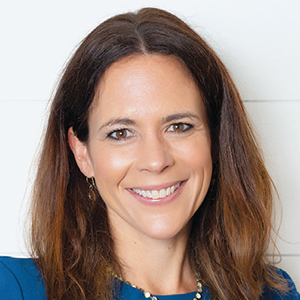Collaboration – By Jenn Lalli
Work before, during and after meetings to build relationships
 No matter your role on the training team, your work each year is likely guided by an annual planning cycle. This process, usually carried out over multiple meetings and often involving participants across the organization, sets the training agenda for the year. Done well, it can reinvigorate your team by providing afresh assessment of what you’ve collectively accomplished and what opportunities lay ahead.
No matter your role on the training team, your work each year is likely guided by an annual planning cycle. This process, usually carried out over multiple meetings and often involving participants across the organization, sets the training agenda for the year. Done well, it can reinvigorate your team by providing afresh assessment of what you’ve collectively accomplished and what opportunities lay ahead.
It’s important to remember, however, that the gulf between creating and achieving annual training goals is significant — and often can only be bridged through cross-functional partnerships.
Experience teaches us time and again that working in a silo almost always guarantees failure. This may be even more true for trainers than other roles. Because trainers strive to impact all teams and every position, they require alignment across the organization concerning critical training priorities as well as the efforts needed to achieve success.
It can take time and practice to gain — and grow — the business relationships you need.
Steps for Creating Strong Partnerships
That said, there are methods for building productive cross-functional relationships that every trainer should consider when looking to begin a collaborative partnership or revisit an existing one. These include steps you should take before, during and after each meeting.
Ahead of the meeting:
- Be intentional. Take the time to prepare for each meeting with your business partner by reflecting on your intentions and what you know about their goals. Review notes from previous meetings or, if this is a first encounter, consider what you know or have heard about this colleague.
Keeping in mind that every partnership should be mutually beneficial, ask yourself about:
-
- Your objectives: What are you hoping to achieve through this meeting? How can this partner help you reach your goals?
- Your partner: What is their WIIFM (what’s in it for me) for this collaboration? How might you be able to benefit them or help them reach their goals?
During the meeting:
- Listen. It may sound simple, but most people find that listening is a tough skill to master. This can especially be true when you’re eager to discuss your own goals. When you’re tempted to jump into the conversation, remind yourself of what it feels like to be interrupted midthought. Good partnerships are built on respect.
- Restate what you’ve heard. Consider this the second half of good listening. Restating shows your colleague that you value their ideas. It also gives them the opportunity to clarify anything they feel has been misunderstood. This can be particularly important in new partnerships when all involved are adapting to one another’s communication styles.
- Find common goals. Clearly communicate your business priorities and needs, while understanding that alignment requires not only collaboration but compromise. Ask questions designed to uncover not only what your partner says they need, but why they believe they need it. Knowing their motivations may help you address their goals in novel ways.
- Connect the dots. When working with multiple stakeholders, always look for their common goals. This can be especially important when gathering input from teams across the organization concerning the annual training plan. Sharing these connections with your stakeholders will keep the process moving in a positive direction while also demonstrating that you are a trusted partner who is listening attentively.
- Determine actions. Leave each meeting with a set of clear next steps, agreed upon by all parties. These steps should be rigorous enough to ensure progress is made toward your mutual goals. Too often, “next steps” are little more than an agreement to meet again. Remember, if you volunteer to take on post-meeting responsibilities, this may encourage your partners to do so as well.
After the meeting:
- Stay connected. Don’t wait until the next official meeting to be in touch. A quick text or email can be a terrific way to sustain momentum and build relationships. Update your partner on the actions you’ve taken or follow up with ideas you’ve had about your project since the meeting. Keeping the conversation going can be a key to long-term success.
The Benefits of Collaboration, No Matter Your Role
Whether you are a manager or new to the training team, the collaborative relationships you develop across the organization will prove useful in multiple ways. If you are involved directly in the annual planning process, the insights gained from these partnerships will ensure your team’s training priorities best serve the organization’s needs. The partnerships will also prove essential when it comes to coordinating initial training and ongoing reinforcement.
Even if you are not setting the agenda for your team, you will find that what you learn from your cross-functional partners will enable you to better communicate the relevance and benefits of training to learners. Always keep in mind, no matter what your role, that your collaborative partnerships must benefit both parties if they are to last.
The Agility of Alignment
Strong partnerships also produce benefits outside of the annual planning cycle. Invariably, as a trainer, each year you must respond to events you could not anticipate. Maybe a competitor came out with a new product — or a pandemic suddenly changed your way of working.
No matter what the unexpected incident might be, you’ll find that being able to rely on cross-functional partnerships will help you more quickly assess the situation, create a plan and carry out a solution that best empowers your organization to live its mission.
It’s a Journey
Like all relationships, cross-functional collaborations must be fostered over time if they are to last. Don’t assume you can neglect a partnership forged at this year’s annual planning meeting and expect it to be equally productive when the next planning cycle begins.
Make an effort to connect with your colleague well in advance of the official meeting. Ask open ended questions to help you ascertain how their goals and objectives may have changed. Most of all, don’t focus solely on the meeting itself when you will need these partners to engage in a journey with you throughout the year.
 Jenn Lalli is the senior director of business development and marketing for Encompass Communications and Learning, as well as an LTEN Ambassador, member of the LTEN Editorial Advisory Board, and 2023 LTEN Member of the Year (Provider). Email Jenn at jlalli@encompasscnl.com.
Jenn Lalli is the senior director of business development and marketing for Encompass Communications and Learning, as well as an LTEN Ambassador, member of the LTEN Editorial Advisory Board, and 2023 LTEN Member of the Year (Provider). Email Jenn at jlalli@encompasscnl.com.








